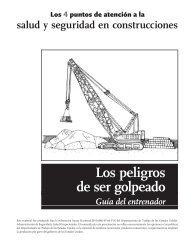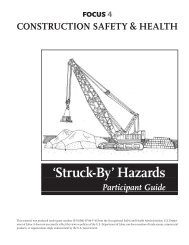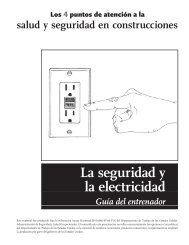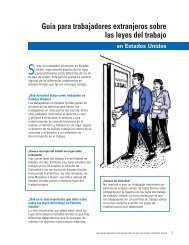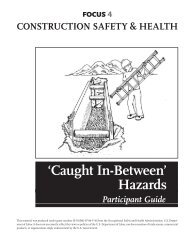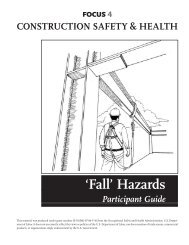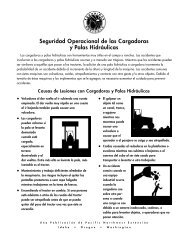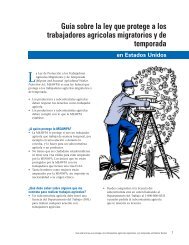Day Labor study 2006.pdf - National Council for Occupational Safety ...
Day Labor study 2006.pdf - National Council for Occupational Safety ...
Day Labor study 2006.pdf - National Council for Occupational Safety ...
You also want an ePaper? Increase the reach of your titles
YUMPU automatically turns print PDFs into web optimized ePapers that Google loves.
elected to visit all known sites except <strong>for</strong> some sites in Los Angeles, New York andOrange County. We used several criteria to select sites in these locations. These criteriaincluded the location of the site in the greater metropolitan area and the number ofworkers (size) at the site and whether or not the site identified was in<strong>for</strong>mal or a workercenter. Our goal was to obtain a geographically diverse number of hiring sites in all the264 sites in the 46 MSAs throughout the United States.A total of 2,660 surveys were completed. The majority of the interviews wereadministered in Spanish and all were conducted face to face. The survey was undertakenduring a continuous seven-week period (the last week of June to mid-August 2004). Eachinterview included more than 100 questions including charts. The survey took about 35minutes to complete. Participation in the survey was voluntary and respondents weregiven $10 <strong>for</strong> answering our questionnaire.Estimate of the <strong>Day</strong>-<strong>Labor</strong> Population in the United StatesThe number of persons included in the survey in each site is assumed to be lessthan 100 percent of the day-labor population accessing the day-labor market. The modeldeveloped assumes:1. an individual does not use more than one site to access the market on a givenday.2. workers may secure multiple-day assignments and there<strong>for</strong>e might not returnto the hiring site every day.3. the number of workers observed in the survey count likely underestimates theday-labor population, because it only includes day laborers who were seekingemployment at the time of the survey or were excluded <strong>for</strong> other reasons.4. the number of sites identified are the only sites in each of the selectedmetropolitan areas, thus the estimates offer at best a lower bound since it isvery likely that survey researchers missed a number of hiring sites becausethose sites were unknown to the day laborers interviewed and the keyin<strong>for</strong>mants contacted during the site identification phase of the <strong>study</strong>.Estimating a day-labor population relies on several simplifying assumptions. Formost sites, we had counts prior to the day of the survey and during the day of the survey.First, we assume that if a worker was at the site when the interview was conducted thatthe worker did not work that day. We had a few surveys that were not completed becauseworkers obtained work while interviewing them, but these surveys were excluded fromthe analysis. There is no data <strong>for</strong> the number of workers at four sites because the“counter” was unable to take a count of the site (the site might have been too big, thepolice may have disrupted the site, or some other problem was encountered) or the sheetwas lost.The total number of workers at the sites was 39,452, as indicated (Table D). It isimportant to note the variability of the site sizes. The number of workers at any given siteis an overall indication of the labor pool of day laborers in the area.31



